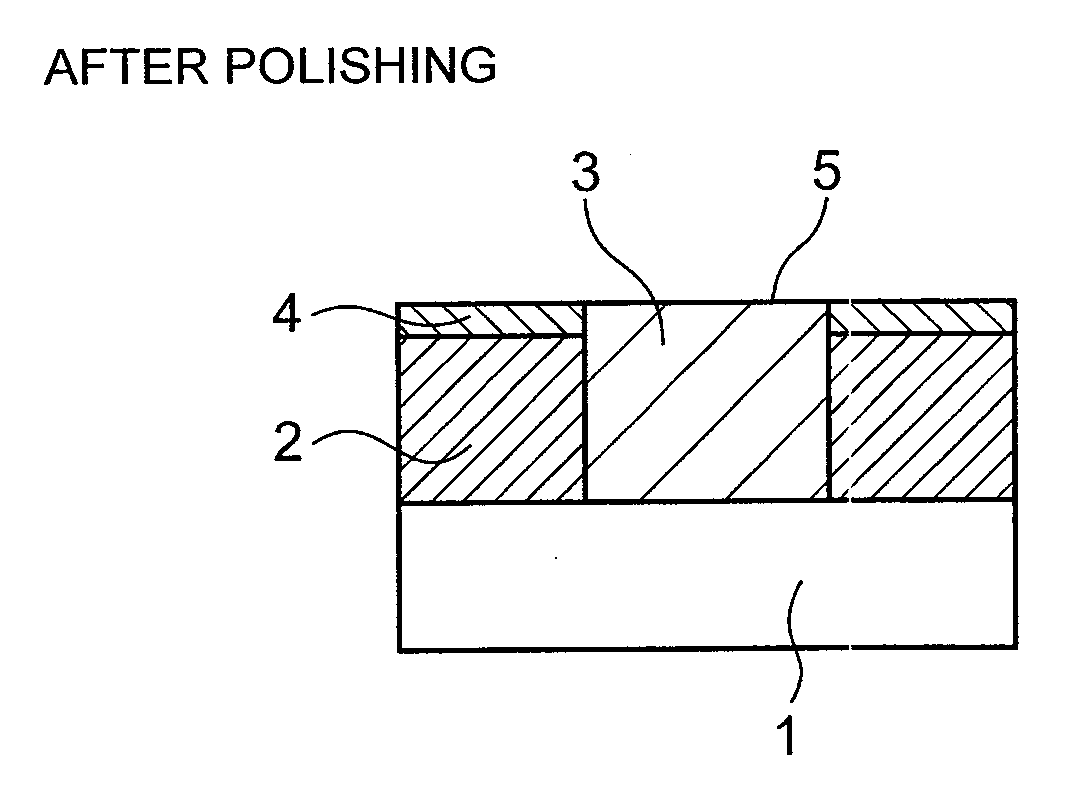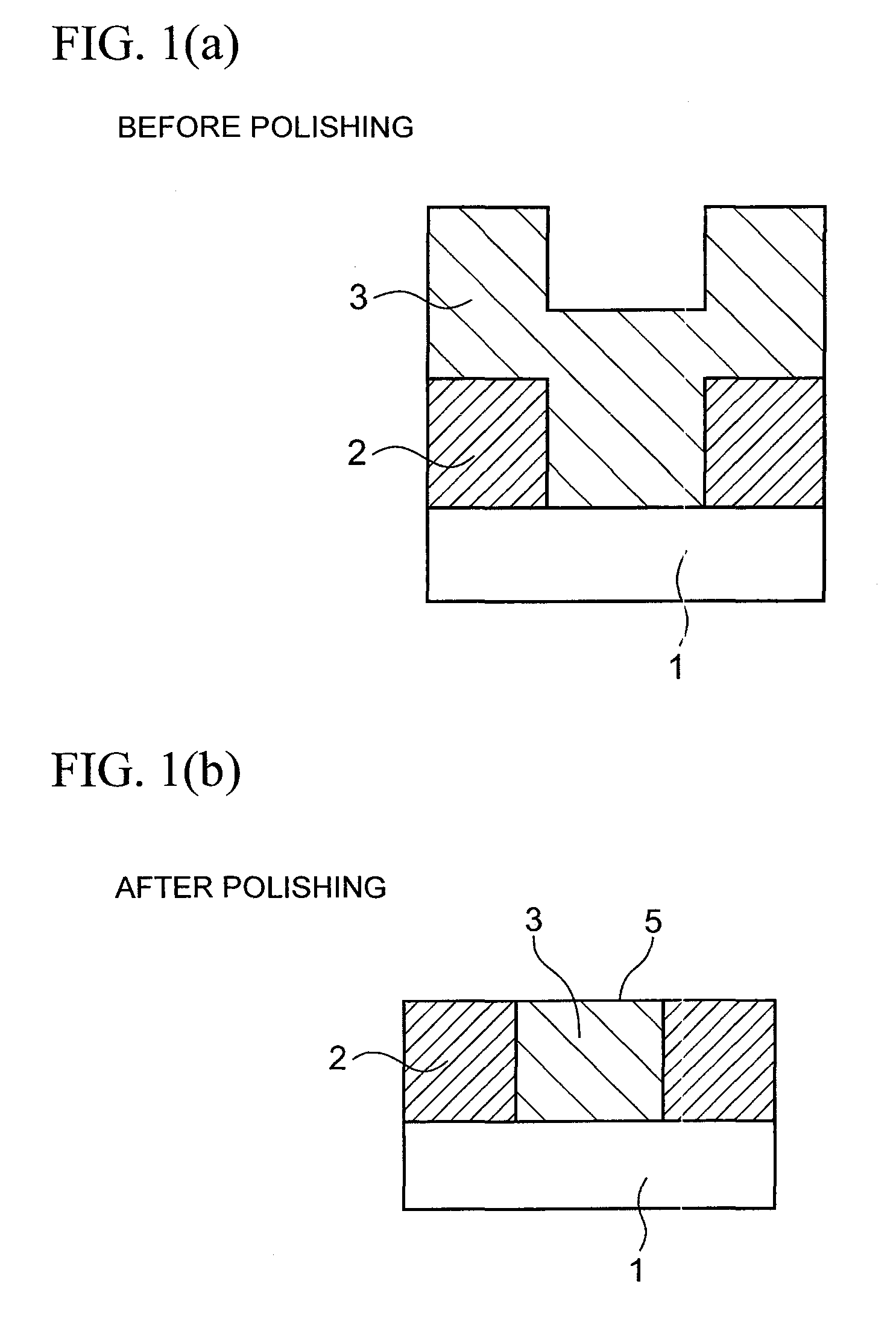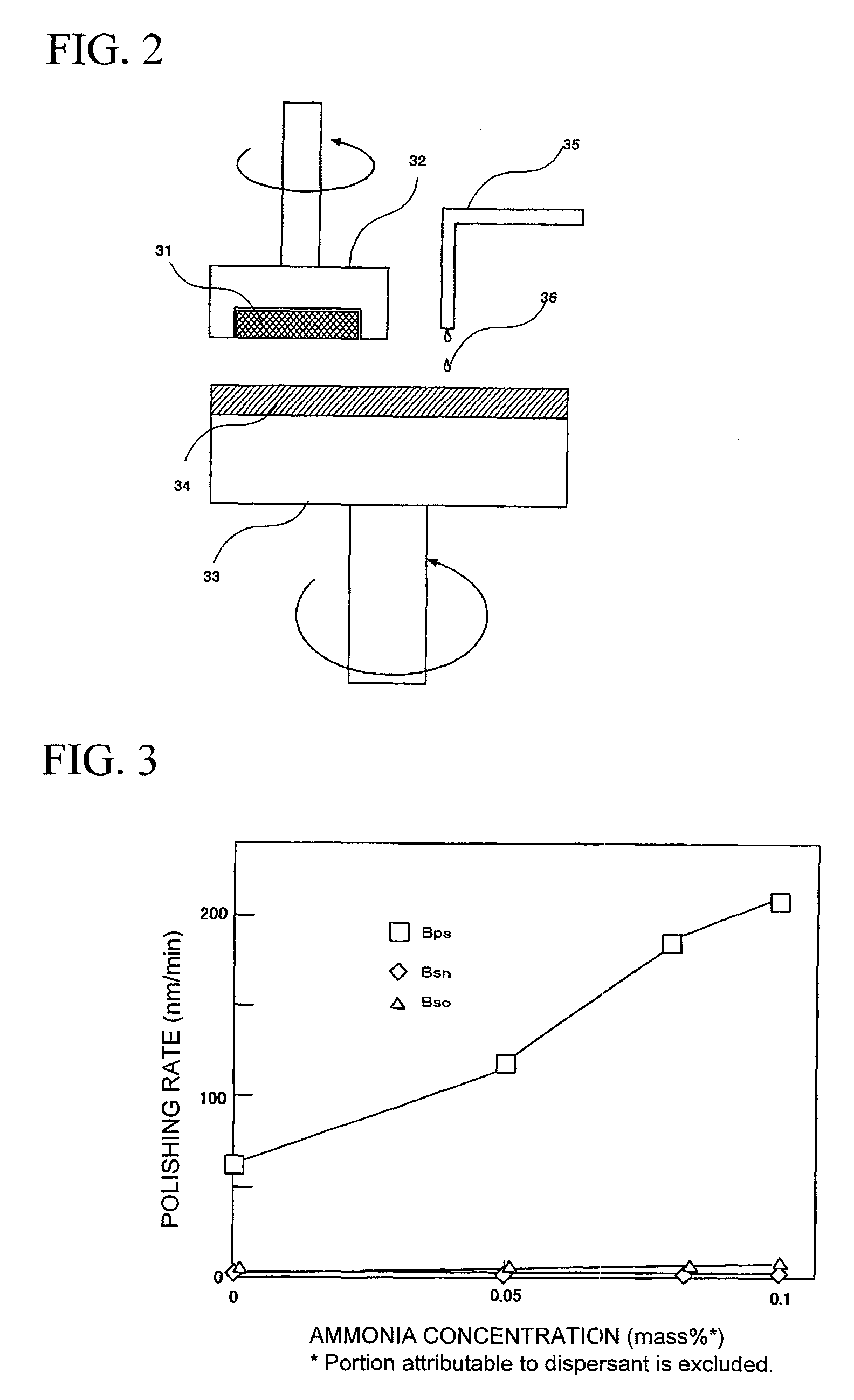Polishing agent for semiconductor integrated circuit device, polishing method, and method for manufacturing semiconductor integrated circuit device
- Summary
- Abstract
- Description
- Claims
- Application Information
AI Technical Summary
Benefits of technology
Problems solved by technology
Method used
Image
Examples
example 1
[0080]A cerium oxide abrasive grain and ammonium polyacrylate having a molecular weight of 5,000 as a dispersant were mixed in deionized water with stirring to give a mass ratio of 100:0.7, and the mixture was subjected to ultrasonic dispersion and filtration to obtain a mixture having an abrasive grain concentration of 10% and a dispersant concentration of 0.07%. This mixture vas 5-fold diluted with deionized water to produce Abrasive Grain Mixture A having an abrasive grain concentration of 2.0% and a dispersant concentration of 0.014%. The pH of Abrasive Grain Mixture A was 7.6 and the average particle diameter was 0.19 μm.
[0081]Subsequently, as additives, polyoxypropylene diamine having a molecular weight of 230 (Polyether-Amine, trade name, produced by BASF), which is an amine-based water-soluble polymer, and ammonia which is a basic compound, were dissolved in deionized water to produce Additive Solution B1 having a polyoxypropylene diamine concentration of 2.0% and an ammonia...
example 2
[0084]Abrasive Grain Mixture A was produced in the same manner as in Example 1, and Additive Solution B2 was produced in the same manner as in Example 1 except that in the preparation of Additive Solution B1, the ammonia concentration was adjusted to 0.16%. Additive Solution B2 and Abrasive Grain Mixture A were mixed in a mass ratio of 1:1 to produce a polishing agent having an abrasive grain concentration of 1.0%, a concentration of ammonium polyacrylate as a dispersant of 0.007%, a concentration of polyoxypropylene diamine as an additive of 1.0%, an ammonia concentration of 0.08%, and a pH of 10.9.
[0085]The polishing agent produced was evaluated in the same manner as in Example 1. The composition of the polishing agent and the evaluation results of polishing properties are shown in Table 1.
example 3
[0086]Abrasive Grain Mixture A was produced in the same manner as in Example 1, and Additive Solution B3 was produced in the same manner as in Example 1 except that in the preparation of Additive Solution B1, the ammonia concentration was adjusted to 0.2%. Additive Solution B2 and Abrasive Grain Mixture A were mixed in a mass ratio of 1:1 to produce a polishing agent having an abrasive grain concentration of 1.0%, a concentration of ammonium polyacrylate as a dispersant of 0.007%, a concentration of polyoxypropylene diamine as an additive of 1.0%, an ammonia concentration of 0.1%, and a pH of 10.9.
[0087]The polishing agent produced was evaluated in the same manner as in Example 1. The composition of the polishing agent and the evaluation results of polishing properties are shown in Table 1.
PUM
 Login to View More
Login to View More Abstract
Description
Claims
Application Information
 Login to View More
Login to View More - R&D
- Intellectual Property
- Life Sciences
- Materials
- Tech Scout
- Unparalleled Data Quality
- Higher Quality Content
- 60% Fewer Hallucinations
Browse by: Latest US Patents, China's latest patents, Technical Efficacy Thesaurus, Application Domain, Technology Topic, Popular Technical Reports.
© 2025 PatSnap. All rights reserved.Legal|Privacy policy|Modern Slavery Act Transparency Statement|Sitemap|About US| Contact US: help@patsnap.com



